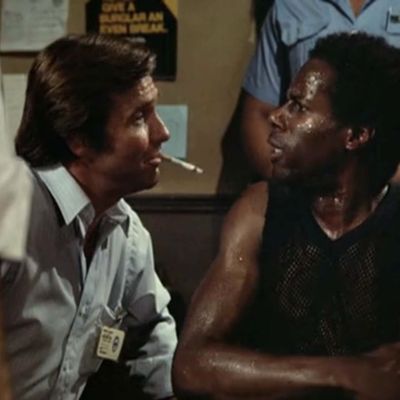
Today, Vulture launches its latest column, Seitz Asks, which aims to tackle both grand questions about the medium and small ones about individual shows or episodes. Every week, TV critic Matt Zoller Seitz will propose a question, give his own answer, and then engage with readers and commenters about their own personal experiences.
As an American boy in the seventies, I saw plenty on TV that scared, disturbed, or upset me: the bigotry and brutality of Roots; naked prisoners being led into a gas chamber on Holocaust; Farrah Fawcett’s torment in The Burning Bed. But I didn’t realize commercial TV could be art, or even aspire to artfulness, until I started watching Hill Street Blues.
In many ways the godfather of today’s melancholy, morally ambiguous cable dramas, the Steven Bochco series imported seventies movie values to NBC. There were content restrictions, some of them jarring (the cops never used any curses milder than “damn” or “hell” ), but for the most part, the show’s situations were rougher and rawer than TV’s norm. The stories dealt with adult issues — sex, race, class divisions, petty office turf wars, political chicanery, alcoholism, drug addiction, you name it — and while some of the characters were more sensible and ethical than others, the show never seemed to judge any of them. There were no bad guys on the show, just people living their lives according to whatever personal code they’d cobbled together.
I was addicted to Hill Street from its premiere in January 1981, but I didn’t understand why until September 30, 1982, when the series aired “Trial by Fury”, a harrowing episode written by a then-unknown David Milch. (You can watch the full episode here. Spoilers follow.) The episode’s “A” plot is grim stuff: Two drug addicts rape and beat a nun while robbing a church. Police captain Frank Furillo (Daniel J. Travanti), an Italian-American Catholic, becomes obsessed with punishing the rapists. During interrogation, the two suspects (both African-American) drop deeply incriminating facts; Furillo’s gut tells him that these are the guys. Unfortunately, there are serious forensic problems, and another nun who saw the perps running away from the church can’t identify them in a lineup. (It’s obvious that she’s having trouble because she’s white and all the men in the lineup are black, even though the show never comes right out and says so.)
After the nun dies, a lynch mob surrounds the precinct house; at one point, a deranged revenge-seeker opens fire inside the station, injuring Furillo’s ex-wife (Barbara Bosson) with flying glass. Furillo devises an ingenious, disturbing solution to the crisis: He decides to charge the suspects with comparatively mild crimes and release them from the station house, where they’ll be torn apart by the mob. The gambit terrifies the suspects into confessing to second-degree murder. Their public defender Joyce Davenport (Veronica Hamel), who also happens to be Furillo’s lover, is disgusted and furious, and tells Furillo he’s using “the oldest excuse in the world: the ends justify the means.” The episode ends with Furillo going to confession; its closing line is, “Bless me, father, for I have sinned.”
I was 12 when I saw “Trial by Fury.” For the next few days, I obsessed over it; it wasn’t just the violence and darkness that disturbed me, it was the episode’s refusal to tell me whom to root for. The programs I mentioned above were more characteristic of “serious” seventies television, in that they dealt frankly with significant, sometimes disturbing topics, but you were never in doubt about what you were supposed to feel as you watched them. “Trial by Fury” was different. Like many Hill Street episodes, but more so, it gave viewers no safe place from which to judge anyone. I didn’t know what to make of it; I argued about it with classmates, discussed it with adults, and thought about it every time I heard about some racially charged crisis on the local news.
When I rewatched “Trial by Fury” for the first time in 30 years, I found it less impressive overall than I’d remembered. One of the subplots (the tax problems of Rene Enriquez’s Lieutenant Calletano) is amusing but forgettable. The other — Sergeant Mick Belker (Bruce Weitz) urging a gay hustler to stop degrading himself — manages to seem revolutionary and cringe-worthy at the same time. But all the scenes involving the rape, the investigation, the lynch mob, and Furillo’s solution have barely aged a day. “Trial by Fury” was, and still is, powerful television. After watching it, I became more discriminating about what sorts of shows I committed to, because I’d seen what TV was capable of.
Can you think of anything on TV that affected you as profoundly?





